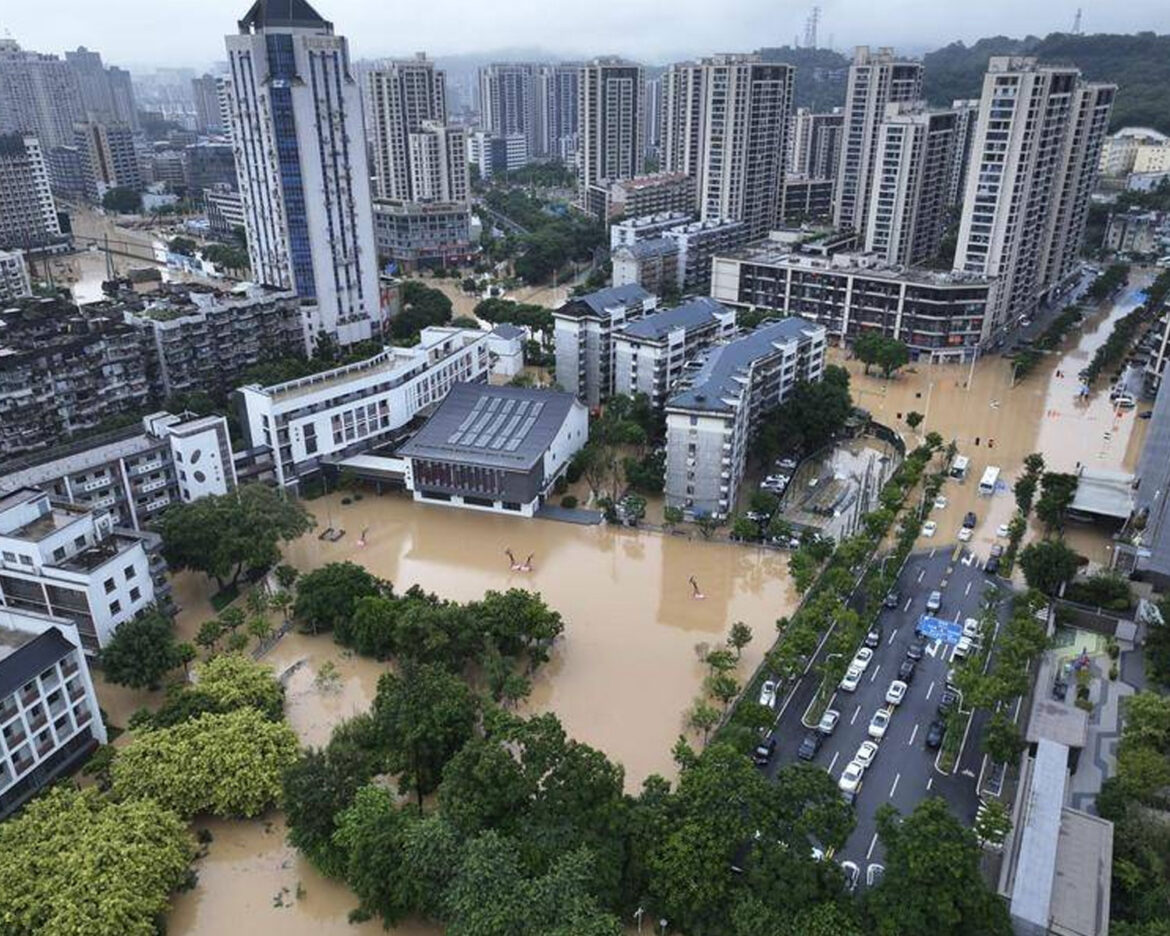Guangdong, China – Former Typhoon Haikui, now a tropical storm, has unleashed relentless heavy rains on southern China for the seventh consecutive day, causing widespread flooding, road blockages, and trapping residents in low-lying areas. The slow-moving storm clouds have drifted from Guangdong on the coast to Guangxi, wreaking havoc in their path.
In the rural county of Bobai in the Guangxi region, rescue teams aboard assault boats have been working tirelessly since Sunday night to evacuate stranded residents from homes submerged in waters over 2 meters deep, as reported by state media on Monday.
The effects of Haikui’s relentless rain have been particularly severe in hilly areas, where landslides have destroyed roads, and bridges have collapsed. In one weather station in Bobai, local records were shattered when rainfall reached a staggering 511.2 mm, accounting for more than a quarter of the region’s annual precipitation.
Haikui weakened from a typhoon to a tropical storm after making landfall in Fujian province on September 5th. However, its residual vortex has continued to wreak havoc in southern China. Shenzhen, a densely populated city, witnessed the heaviest rainfall since records began in 1952. Neighboring Hong Kong also experienced its most severe storm in 140 years.
Scientists have expressed concern that typhoons impacting China are becoming more intense, and their paths are growing increasingly complex, elevating the risk of disasters even in coastal cities like Shenzhen, which have robust flood defense systems in place.
Shao Sun, a climatologist at the University of California, Irvine, warned, “Typhoons that move far inland affect regions historically less exposed to heavy rainfall and strong winds, often with lower disaster resilience, leading to more severe losses.” He added that the slow westward movement of Haikui’s residual circulation and a ‘train effect’ of heavy rainfall were key factors contributing to the unprecedented intensity of the event.
A ‘train effect’ refers to the cumulative impact of multiple convective cloud systems passing over an area in succession, leading to a significant buildup of rainfall and substantially increasing the potential for heavy or even extreme rainfall.
As the heavy rain continues to batter Guangxi, authorities are urging residents to remain vigilant and take necessary precautions. The situation remains fluid, with ongoing efforts to manage the crisis and provide relief to affected areas.



